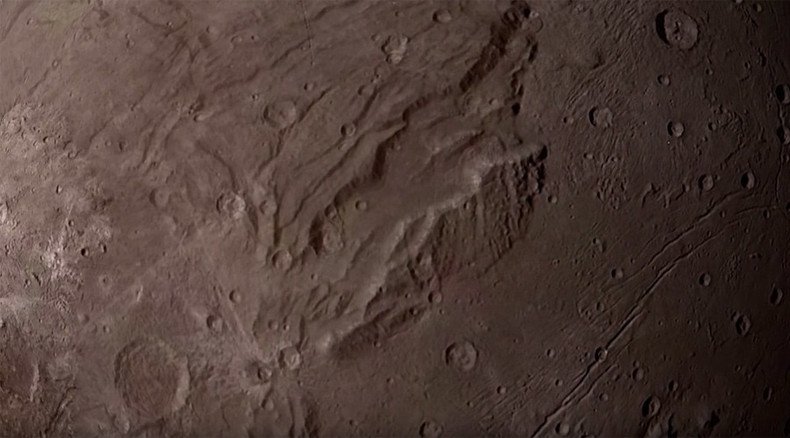What flying over Pluto's moon Charon would look like (VIDEO)

A video of processed photos from NASA's New Horizon space probe shows what it would look like to fly over Pluto's largest moon.
Russian enthusiast Roman Tkachenko has processed images that came from NASA’s New Horizon to turn them into a short video simulating flying over Charon.
LOOK! Now we can see Charon closer than ever before! First flyover video!
https://t.co/GP3LpKEZhM
#NewHorizons#Plutoflyby#Charon#NASA
— NH PROCESSED IMAGES (@NewHorizonsIMG) September 26, 2015Tkachenko enhances openly available data from the New Horizon space probe and uploads images to his Twitter account @NewHorizonsIMG. He also creates videos that he shares with the public on YouTube under the name New Horizons Processed.
No new images of Pluto? Don't worry, I made some fake. Heh heh heh
#NewHorizons#PlutoFlyby#Pluto#NASA#3Dpic.twitter.com/pGPgUgYHM3
— NH PROCESSED IMAGES (@NewHorizonsIMG) September 30, 2015About half the size of Pluto, Charon is the largest known moon in relation to the size of its host planet.
The way Charon and Pluto orbit each other is different from the Earth and the Moon: the two are gravitationally locked to one another, so each keeps the same face towards the other. However, our moon shows the same face to the Earth, while the planet rotates.
We shall be getting more amazing videos like this. The New Horizons mission team estimates it will take the probe about a year to beam all the images and data collected during its close encounter with Pluto.
READ MORE: Space safari: Stunning tour over Pluto's icy terrain (VIDEO)
New Horizons’ journey to the dwarf planet lasted nine years. The spacecraft flew by the planet at a distance of only 7,750 miles (12,500km) in July, taking images at a resolution of a quality up to 400 meters per pixel. This information is sent back to earth at about 2,000 bits per second.
Now the probe is navigating through the Kuiper Belt, a region beyond the planets that consists mostly of small bodies, or remnants from the Solar System's formation, and is home to Pluto and other dwarf planets. Three more objects have been picked in the Belt as potential targets.












